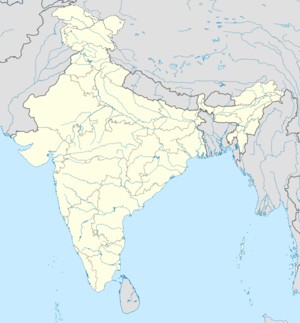
Back चार धाम Bihari চারধাম Bengali/Bangla Char Dham German Char Dham Spanish ભારતના ચારધામ Gujarati भारत के चार धाम Hindi ಚಾರ್ ಧಾಮ್ (ನಾಲ್ಕು ತಾಣ) Kannada ചാർ ധാം Malayalam चार धाम Marathi चार धाम Nepali
This article may require copy editing for grammar, style, cohesion, tone, or spelling. (May 2023) |
The Char Dham (Hindi: चारधाम, romanized: Cārdhām transl. the four abodes), also rendered the Chatur Dhama (Sanskrit: चतुर्धाम, romanized: Caturdhāma)[1] is a set of four Hindu pilgrimage sites in India,[2] consisting of Badrinath, Dwarka, Puri and Rameswaram.[3][4] Badrinath, Dwarka, and Puri are shrines of Vishnu, whereas Rameswaram is a shrine of Shiva.
Defined by Adi Shankara, each dhāma represents a particular yuga, with Badrinath representing Satya Yuga, Rameswaram representing Treta Yuga, Dwarka representing Dvapara Yuga, and Puri representing Kali Yuga.[3][5] Many Hindus believe visiting these sites can help achieve moksha (liberation or salvation).[6]
The Char Dham is not to be confused with the Chota Char Dham, which is a devotional circuit in Uttarakhand.
- ^ Bharati, Agrhananda (3 June 2011). Agents and Audiences. Walter de Gruyter. p. 53. ISBN 978-3-11-080584-0.
- ^ "Chaar Dham Yatra: A True Test of Every Hindu's Quest Towards Spiritual Enlightenment". NewsGram. 20 March 2015. Archived from the original on 23 January 2022.
- ^ a b Dass, Parmeshwar (21 February 2022). "History of Chardham - The Amazing Story of Chota Char Dham". Namaste India Trip. Retrieved 9 November 2023.
- ^ Chakraborty, Yogabrata (28 June 2023). "পুরীধাম ও জগন্নাথদেবের ব্রহ্মরূপ বৃত্তান্ত" [Puridham and the tale of lord Jagannath's legendary 'Brahmarup']. dainikstatesmannews.com (in Bengali). Kolkata: Dainik Statesman (The Statesman Group). p. 4. Archived from the original on 28 June 2023. Retrieved 28 June 2023.
{{cite web}}: CS1 maint: bot: original URL status unknown (link) - ^ ADMIN (5 February 2023). "Char Dham Yatra : Journey To Spiritual Liberation". TEMPLE KNOWLEDGE. Retrieved 9 November 2023.
- ^ Burkhalter-Flueckiger, Joyce (2015). Everyday Hinduism. Wiley. p. 110. ISBN 9781405160117.
© MMXXIII Rich X Search. We shall prevail. All rights reserved. Rich X Search




